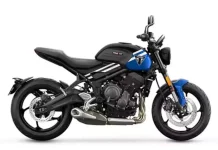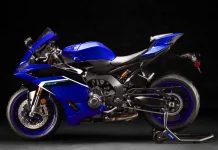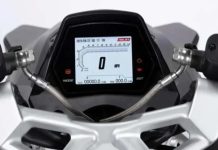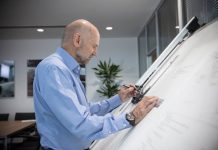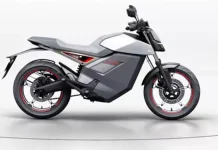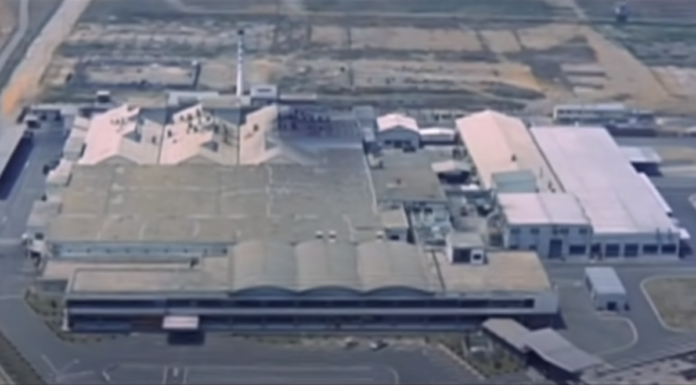Soichiro Honda’s Vision
In the realm of motorcycle history and manufacturing, the 1962 Honda documentary film stands as a significant artefact, offering an immersive look into the past. This film is more than just a window into the process of building motorcycles; it’s a journey through time, capturing the essence of an era and the pioneering spirit of one of the world’s most renowned motorcycle manufacturers.
For enthusiasts and historians alike, this documentary presents a unique opportunity to witness the early days of Honda’s motorcycle production, including the making of iconic models such as the Cub 50, Benly, and Dream 250. It’s a story told through the lens of a camera in an age where film stock was the medium of choice, bringing to life the vibrancy and dynamism of 1960s Japan and its flourishing motorcycle industry.
Honda Motorcycle History
This documentary film from 1962 produced by Honda provides a comprehensive and nostalgic look into the history and operations of their motorcycle factories. It includes insights into the production of iconic models like the Cub 50, Benly, and Dream 250. Although the narration is in Japanese, modern viewers have the convenience of auto-translated closed captions in various languages.
Top Key Points
- Honda released a documentary film in 1962 that takes viewers inside some of its motorcycle factories.
- The film is narrated in Japanese, but there are auto-translated closed captions available in English and other languages.
- The film is a beautiful time capsule that showcases not only the processes involved in making and assembling motorcycles but also the general life at Honda.
- The film includes a visual visit to the very early days of what’s now known as Honda Mobilityland, including a brief glimpse of the extremely early days of the beloved Honda Monkey in action as an amusement park ride.
- The film also provides insight into motorcycle testing, from employees taking bikes out for weekend leisure activities like hunting and fishing to putting some of the new machines through their paces at the motocross and hillclimb facility on Honda’s grounds.
- The film is a half-hour film that’s well worth your time.

1960s Manufacturing Process
The film is not just a technical showcase but also a cultural snapshot, revealing aspects of daily life at Honda during that period. Viewers are taken on a journey through Honda’s early days, including a peek at Honda Mobilityland and the Honda Monkey as an amusement park attraction. It also highlights the lunchroom interactions of Soichiro Honda and his team, reflecting the communal spirit of the workforce.
The documentary extends beyond the factory walls, illustrating how employees engaged with the motorcycles in their leisure time, like using them for hunting and fishing. It provides a glimpse into the rigorous testing processes, including motocross and Hillclimb tests, as well as 1960s-era dyno and aerodynamics testing.
Cultural Insight
What makes this film stand out are its artistic elements – the editing, creative decisions, score, sound effects, and the integration of factory sounds in storytelling. The conclusion with a marching band and the visual of transporters carrying loads of motorcycles adds a celebratory and proud tone to the documentary.
The key analysis of the 1962 Honda documentary film highlights several important aspects:
- Historical and Cultural Insight: The film offers a rare glimpse into the early days of Honda’s motorcycle manufacturing. It serves as a cultural and historical snapshot, not only showcasing the production processes but also providing a look at the daily life and community within Honda during that era.
- Technical Showcase: The documentary details the manufacturing process of iconic Honda models such as the Cub 50, Benly, and Dream 250. It gives viewers an inside look at the intricacies and craftsmanship involved in building these motorcycles.
- Insight into Company Philosophy and Employee Engagement: Scenes like those in the lunchroom with Soichiro Honda and his team, or employees using motorcycles for leisure activities, reflect the company’s community spirit and the integration of their products into employees’ lives. This offers insight into Honda’s philosophy towards its workers and products.
- Innovation and Testing: The film highlights the rigorous testing processes employed by Honda, including motocross and Hillclimb facilities, as well as dyno and aerodynamics testing. This showcases Honda’s commitment to innovation and quality assurance.
- Artistic and Creative Elements: The documentary is notable for its editing, score, sound effects, and the creative integration of factory sounds into the storytelling. These elements add an artistic dimension to the film, making it more than just a technical or historical document.
- Accessibility and Relevance: Despite being narrated in Japanese, the availability of auto-translated closed captions makes the film accessible to a global audience. This feature underscores its relevance even in the modern digital age.
- Enduring Appeal: The film concludes with a celebratory tone, featuring a marching band and visuals of motorcycles being shipped worldwide, highlighting the global impact and enduring appeal of Honda motorcycles.
The 1962 Honda documentary is a multifaceted film that offers more than just a look at motorcycle manufacturing; it is a valuable piece of history that encapsulates the ethos of Honda, its commitment to quality, and its cultural impact during that era. It’s a compelling watch for anyone interested in motorcycles, manufacturing history, or corporate culture.
Japanese Industrial Heritage
For motorcycle enthusiasts, history buffs, or anyone interested in the intricate world of manufacturing and company culture, this film offers a well-rounded, engaging experience. It’s recommended to add it to your watchlist for a unique and rewarding viewing experience.
Conclusion
The 1962 Honda documentary film is not just a retrospective on motorcycle manufacturing; it’s a testament to the enduring legacy of Honda and its contributions to the motorcycle industry. Through its detailed portrayal of the manufacturing process, glimpses into the lives of its employees, and the showcasing of its early innovations, the film transcends the bounds of a simple documentary.
It becomes a celebration of technological advancement, cultural heritage, and the human element within the industrial landscape. This film, with its artistic flair, technical insights, and historical significance, is more than a documentary—it’s a tribute to the past, an inspiration for the present, and a beacon for the future of motorcycle manufacturing. For those who have not yet seen it, it’s an essential watch, promising not only to educate but also to inspire and entertain



